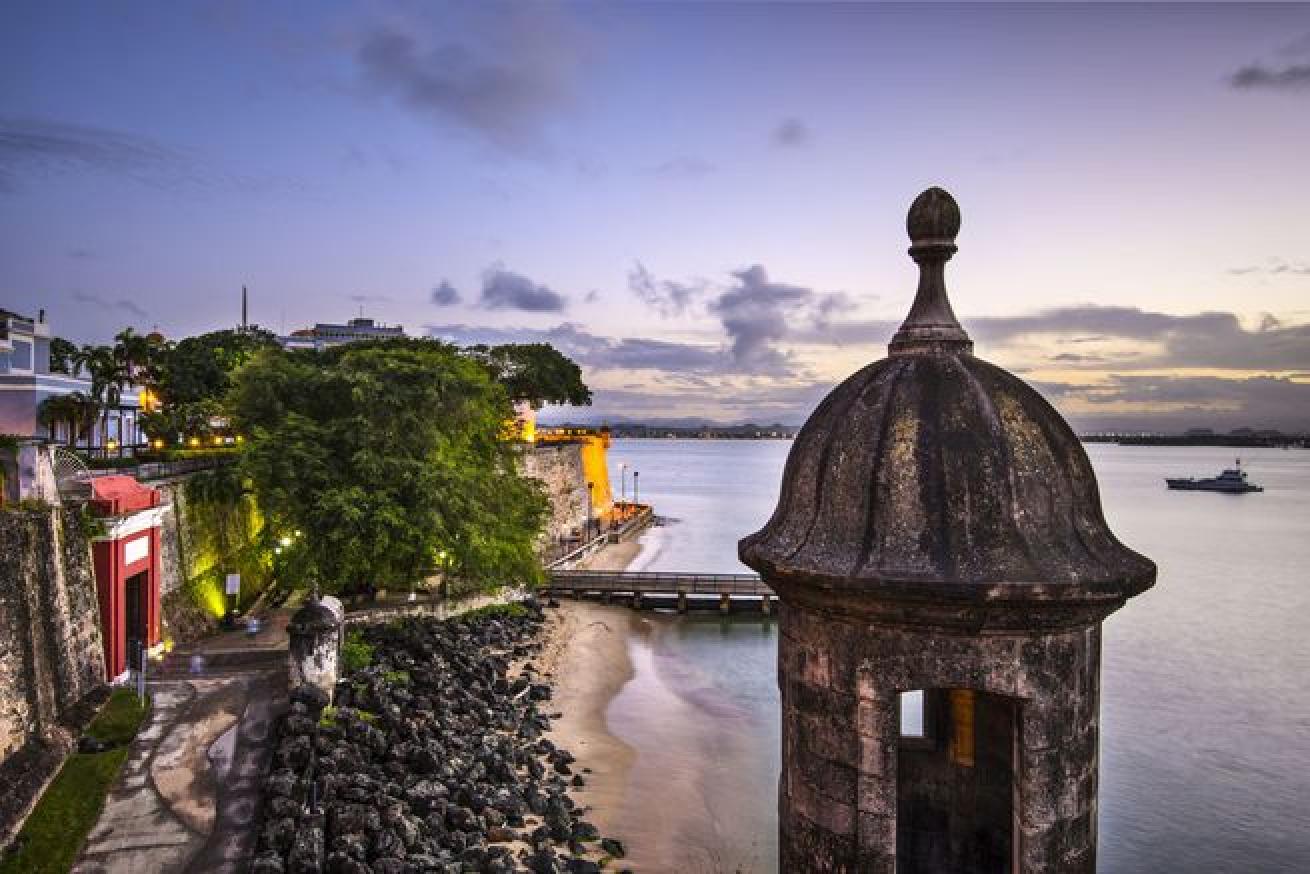Puerto Rico
Anguilla's turquoise waters boast seven marine parks: Dog Island, Prickley Pear, Seal Island Reef System, Little Bay, Sandy Island, Shoal Bay Harbour Reef System and Stoney Bay Marine Park. Dive sites include wreck dives, shore dives, mini wall dives, night dives and heritage diving. Anguilla is known for its intentionally sunk shipwrecks. The island is home to a truly unique attraction, a 960-ton Spanish galleon, El Buen Consejo, that rests on the ocean floor with its cannons and cargo serving as a silent testament to the Caribbean's turbulent past. Anguilla also boasts a healthy double reef system, where a wide variety of corals flourish.
Weather: About 80 degrees year-round.
Average Water Temp: Mid-80Fs in summer in the north, dropping to mid-70Fs in winter. Dive season is year-round.
Average Visibility: 100-plus feet.
Travel Savvy: A passport and onward or return ticket is required. Anguilla is 20 minutes north from French St. Martin by ferry. There are a number of options available for getting to the island. Visitors can fly directly into Anguilla's Wallblake Airport from Puerto Rico via American Eagle/American Airlines and LIAT, or opt to fly directly to St. Maarten, Antigua, St. Thomas or St. Kitts for easy transfer to Anguilla
Destination Links: www.anguilla-vacation.com and www.ahta.ai.

No passport is required in this commonwealth of the United States, the fourth largest island in the Caribbean. Puerto Rico's varied geography offers a wide range of diving as well as topside opportunities. Its favorable location, straddling the semi-protected Caribbean Sea and the open Atlantic, means that divers get the best of two realms, with sheltered reefs, pelagics from the deep, vertigo-inducing drop-offs and networks of caves and tunnels.
Rincon is where land-based dive operators run trips westward to Desecheo Island, where phenomenal visibility and a treasure chest of dive sites await. One of them is Las Cuevas (the Caves). Because it's shallow, with a max depth of only 30 feet, Las Cuevas is the ideal, chillout second dive, with plenty of canyons and arches to explore. If you've ever played the board game Candyland in your childhood and remember all its odd-shaped mounds, you'll quickly realize why there's a Desecheo dive site named in its honor. That's what the coral formations resemble, and you'll also see plenty of tropical fish. The aptly named Sea Fan City hosts a tremendous array of purple and white sea fans and barrel sponges at a 45-foot garden spot in white sands.
Southern and eastern Puerto Rico also feature great diving. La Parguera, on the island's southwest edge, features at least two dozen spots. Both Black Wall and Efra's Wall have forests of black coral and Fallen Rock is a likely spot for encounters with pelagics.
Eastward, Puerto Rico has two smaller satellite islands ripe for diving — Culebra and Vieques. The establishment of the Culebra Marine Reserve Park ensures that its dive sites are protected. Cayo Lobito is a 75-foot dive where nurse sharks and jacks are plentiful, while Cayo Raton is known for smaller residents.
Unlike other areas of Puerto Rico, there's ample opportunity for shore diving on Vieques. Boat trips shuttle divers out to Angel Reef, where, because it's seldom dived, corals are in excellent shape, and Patti's Reef, which features more swim-throughs.
Weather: The average temp in summer is 85; in winter it's 83. Temps are lower at higher elevations.
Average Water Temp: 85 in summer and 75 in winter.
Average Visibility: 60 to 80 feet around the main island, and upwards of 100 feet around Mona and Desecheo.
Entry Documents: Since Puerto Rico is a U.S. territory, no passport is required for U.S. citizens.
DIVE DEALS
PARTNERS










